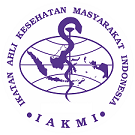Comparison of the Incidence of Preterm Labor Between Pregnant Woman with Systemic Lupus Erythematosus Mild and Moderate-Savere
DOI:
https://doi.org/10.26911/thejmch.2024.09.06.05Abstract
Background: Systemic Lupus Erythematosus (SLE) is an autoimmune disease that can affect pregnancy, particularly by increasing the risk of preterm birth. This condition can be influenced by various factors, including the level of SLE activity. Therefore, this study aims to analyze the relationship between preterm birth and the activity level of SLE categorized as mild and moderate-to-severe.
Subjects and Method: This study used an analytical observational technique with a cross-sectional research design based on medical record data of pregnant women with SLE at Dr. Moewardi Hospital in the 2021-2023 period, selected through consecutive sampling This study involved 77 pregnant patients with SLE. The dependent variable is preterm labor. The independent variable in this study is pregnant women with SLE. The data were collected by medical record. The data were analyzed by Fisher’s exact test.
Results: There was no significant association between the degree of systemic lupus erythematosus activity and preterm labor (p= 0.759).
Conclusion: This study shows that there is no significant relationship between the incidence of preterm labor and the degree of systemic lupus erythematosus activity (mild and moderate-to-severe).
Keywords:
systemic lupus erythematosus, pregnancy, preterm laborHow to Cite
References
Clowse ME, Wallace DJ, Weisman M, James A, Criscione-Schreiber LG, Pisetsky DS (2013). Predictors of preterm birth in patients with mild systemic lupus erythematosus. Ann Rheum Dis. 72(9):1536-9. doi: 10.1136/annrheumdis2012202449.
Ministry of Health (2017). Situasi lupus di Indonesia (The situation of lupus in Indonesia). Jakarta: Infodatin.
Roziana R, Harahap R, Aditya R (2020). Perbandingan luaran ibu dan bayi pada penderita sistemik lupus eritematosus dengan berbagai klinis yang berbeda di Rumah Sakit Umum Daerah dr. Zainoel Abidin tahun 2016–2017 (Comparison of maternal and infant outcomes in patients with systemic lupus erythematosus with various clinical conditions at the Dr. Zainoel Abidin Regional General Hospital in 2016–2017. Journal of Medical Science. 1(1): 43–47.
Suparman E (2021). Lupus Eritematosus Sistemik (LES) pada Kehamilan (Systemic Lupus Erythematosus (SLE) in Pregnancy). E- CliniC. 9(2): 497-503a. https://doi.org/10.35790/ecl.v9i2.35375
Sumariyono (2019). Diagnosis dan pengelolaan lupus eritematosus sistemik (Diagnosis and management of systemic lupus erythematosus). Perhimpunan Reumatologi Indonesia. Retrieved from: https://reumatologi.or.id/wpcontent/uploads/2020/10/Diagnosis_dan_pengelolaan_SLE.pdf
Sangah AB, Jabeen S, Hunde MZ, Devi S, Mumtaz H, Shaikh SS (2023). Maternal and fetal outcomes of SLE in pregnancy: a literature review. J Obstet Gynaecol. 43(1):2205513. doi: 10.1080/01443615.2023.2205513.
Vaillant AAj, Goyal A, Varacallo MA (2023). Systemic Lupus Erythematosus. Retrieved from: http://ncbi.nlm.nih.gov/books/NBK535405/
Zhu T, Zhan G, Shang Z, Ying Z (2024). Causal relationship between systemic lupus erythematosus and adverse pregnancy outcomes: A two-sample Mendelian randomized study. Heliyon. 10(15):e35401. doi: 10.1016/j.heliyon.2024.e35401.










